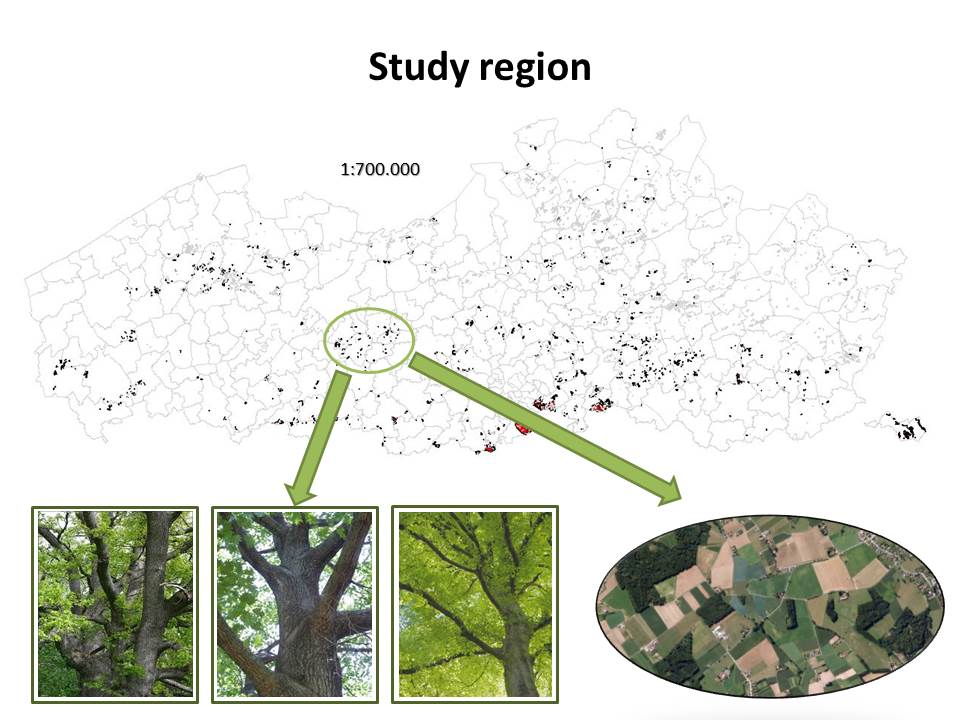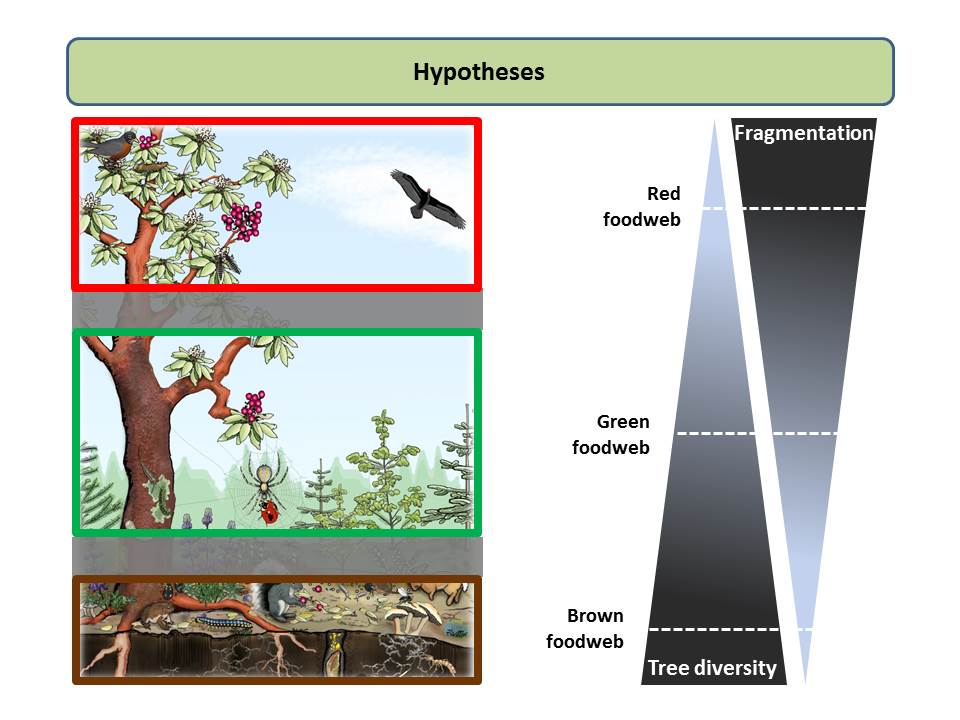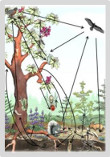Scaling Up Functional Biodiversity Research
from individuals to landscapes and back
Concerted Research Action University Ghent (GOA), 2014-2019
Outline
After two decades of functional biodiversity research (FBR), there is a global consensus that a higher diversity of genotypes, species and communities results in an increase of vital ecosystem process rates. Theoretical and experimental FBR studies showed that relationships between biodiversity and ecosystem functions can result from three non-exclusive mechanisms: niche complementarity, sampling and ecological insurance effects). Species and ecosystem dynamics are expected to depend on the structure of the foodweb. Besides, evidence is also growing that environmental changes at broad spatial scales, such as triggered by fragmentation and loss of natural habitats, may cause rapid phenotypic, physiological and behavioural shifts across trophic networks and that ecological and evolutionary dynamics resulting from these shifts may be intimately linked. Despite a strong theoretical framework on putative interactions between local (foodweb) and landscape-level (fragmentation) effects on ecosystem functioning, and despite the fact that habitat fragmentation is increasingly recognized as the prime driver of the worldwide loss of biodiversity, changes in foodweb structure resulting from habitat fragmentation so far have been rarely addressed in functional biodiversity studies.
Fig 1: Location of the study area in Flanders. Forests fragments are situated in the South of Ghent and differ in spatial configuration and tree species diversity
By applying a unique plot design in fragmented forests in the vicinity of Ghent (Fig 1) and inventive experimental setups, and combine state-of-the-art tools and methods stemming from forestry, (behavioural) ecological and epidemiological research disciplines, this project aims to scale up functional biodiversity research from a classical plot to a landscape level, and from producer dynamics to predator fitness. The project is funded by Ghent University (Concerted Research Action). This project aims to advance our understanding of how biological drivers operating at different spatial scales affect relationships between biodiversity and ecosystem functioning (photosynthesis, nutrient cycling, pest and disease dynamics) through an individual-based, mechanistic and multi-disciplinary study of foodweb dynamics in a real-world forest landscape. Tree diversity is predicted to affect forest ecosystem functioning through interactions among different sub foodwebs, i.e. the detritivore or brown foodweb, the consumer or green foodweb, and the pathogen or “red network”, which are tightly linked through feedback loops with forest primary production.

Fig 2: The project aims to study the relative importance of fragmentation and tree diversity for foodweb functioning. A prominent impact of habitat fragmentation is expected at higher trophic levels and related functions as disease transmission, pest control than at basal trophic levels and functions (litter decomposition) - Food web pictures were modified from Ecoplexity
By integrating high-resolution sampling, measurement and observation schemes (to infer correlative relationships) with strictly-controlled field- and lab experiments (to infer causal relationships) and statistical modeling (to infer generic relationships), we aim to present a first synthesis of how spatial and diversity drivers may affect ecosystem functions across different trophic levels and in real landscapes. Ultimately, this will increase our understanding of how functional diversity within and among foodwebs affects ecosystem functioning through the processes of nutrient cycling, primary production and spatial dynamics of pests and diseases, and will allow us to detect potential tipping points in case of non-linear responses. Because sub foodwebs are expected to be differentially affected by biological drivers, we expect the relative importance of tree identity, diversity and forest fragmentation to differ along the trophic chain (Fig. 2).
To test ecosystem patterns and processes within and among trophic levels, our project is divided into six complementary work packages that reflect both the multitrophic design of our project and multidisciplinary nature of our research consortium.
 |
WP1 – plot selection and characterization |
 |
WP2 – producer dynamics |
 |
WP3 – decomposer dynamics |
 |
WP4 – herbivore and primary predator dynamics |
 |
WP5 – ... |
 |
WP6 – Synthesis and integration |
The consortium links four research teams from three faculties of Ghent University. To implement this multidisciplinary project, a total of four PhD students (2014 onwards), two field/lab assistants (2014 onwards), and two postdocs (2018-2019) will be fully involved in the project and joined by colleagues with independent funding from the different research groups.
PI of the project:
- L. Lens (WE11-Biology, Spokesman)
- D. Bonte (WE11 - Biology)
- A. Martel (DI05 - Pathology, Bacteriology and Avian Diseases)
- K. Verheyen (LA04 - Forest and Water Management)
Involved researchers:
-> Filesharing section



